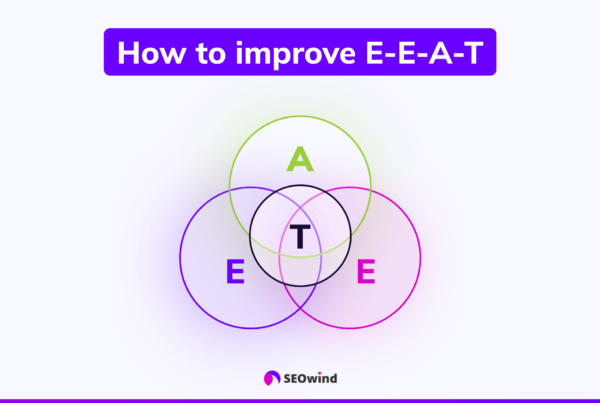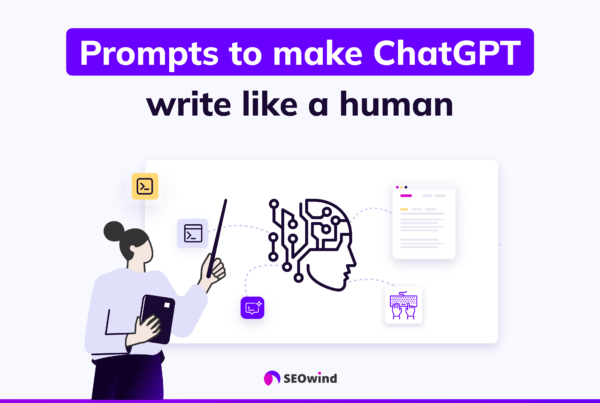Writing compelling blog headlines isn’t just about being creative. There’s real science behind what works. Your blog headings make the difference between content that gets read and content that gets ignored, no matter how good your writing is.
This guide brings together proven headline frameworks, data-driven insights, and real examples to help you create headlines that grab attention and deliver results. Let’s change how you think about writing blog headings that actually work.
What is a Blog Heading?
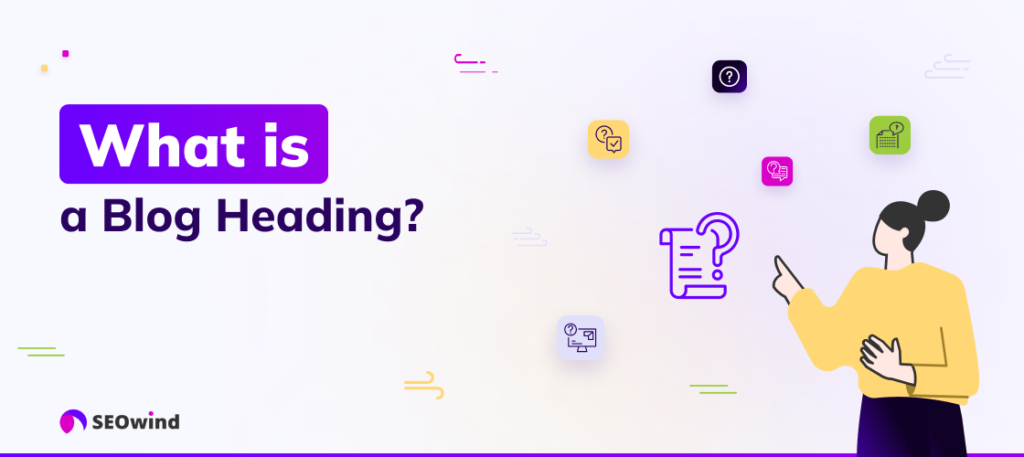
A blog heading (or headline) is your content’s front door. It’s the first thing people see when deciding whether your article is worth their time. Effective blog headings accomplish three key tasks simultaneously: they capture attention, demonstrate value, and clearly inform readers of what to expect.
Here’s why this matters: Backlinko’s research shows that the top search result gets clicked 10 times more often than the result in position #10, with an average click-through rate of 27.6%.
Headlines do more than engage readers. They boost your SEO, help people with disabilities navigate your content, and organize your writing so it’s easier to follow. Even the best articles fail without headlines that capture people’s interest and make them want to click.
10+ Proven Blog Headings Types with Examples
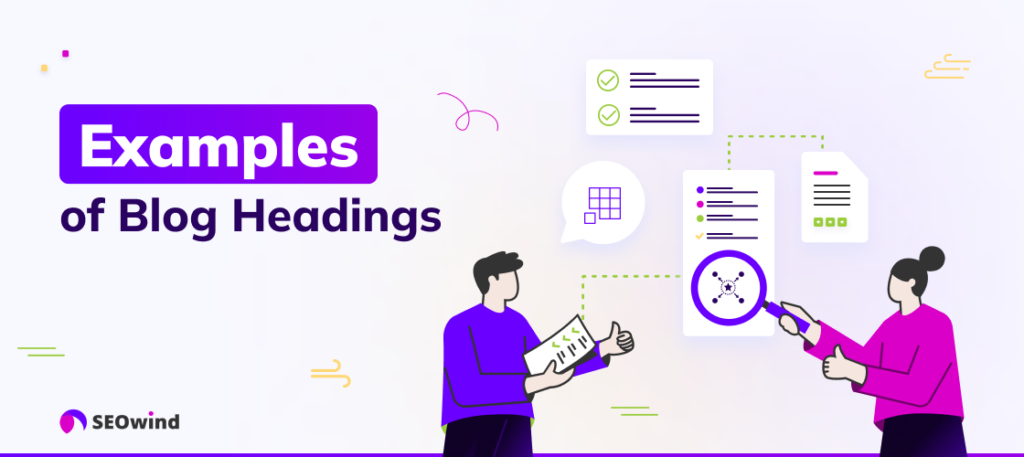
Knowing different headline styles helps you select the most effective approach for your content and audience. Map&Fire research found that people prefer headlines with around 6 words for optimal readability and engagement. Here are the formats that work:
1. The “Everything you need to know” Headlines
These headlines promise complete coverage of a topic, appealing to people who want the full picture in one place.

Examples:
- Everything You Need to Know About Email Marketing in 2025
- The Complete Guide to Content Strategy: Everything You Need to Know
- Home Brewing 101: Everything You Need to Know to Start Today
How it looks in Google:

2. The ‘Make My Life Easier’ Blog Post Headlines
These tap into everyone’s desire for simpler solutions and quick wins.
- How to Save Time and Money With Meal Planning
- Streamline Your Morning Routine With These Simple Tips
- Make Traveling Stress-Free: Top Apps for Easy Navigation
3. The ‘Best’ Blog Post Titles
CoSchedule’s headline analysis reveals something interesting: negative superlatives actually work better than positive ones by nearly 30%. These headlines work because they make definitive claims:
- Best Strategies for Growing Your Instagram Following
- Top 10 Must-Watch Movies of 2025
- The Greatest Life Hacks You Never Knew You Needed

4. The ‘It’s a Race’ Blog Post Titles
Nothing drives action like urgency. These headlines create FOMO (fear of missing out) by emphasizing timing and getting ahead:
- Skyrocket Your Productivity Before Lunch: A Guide to Winning Mornings
- Get Ahead of the Game: Essential Skills for Future Success
- Don’t Miss Out on These Exclusive Offers and Discounts!
5. The ‘If I Were You’ Blog Title
These headlines work because they show empathy—the writer puts themselves in your shoes and offers advice from experience:
- If I Were Starting My Business Today, This Is What I’d Do Differently
- What Every First-Time Homebuyer Should Know From Someone Who’s Been There
- Unsure About Investing? Here Are Some Tips From an Experienced Investor
6. The ‘What We Do When…’ Blog Post Titles
These headlines make abstract ideas concrete by showing real situations and practical solutions:
- What Successful Entrepreneurs Do When They Face Rejection
- How Top Athletes Maintain Their Focus During High-Stress Competitions
- Here’s What Health Experts Advise for Staying Energized Throughout the Day
7. The ‘Why X People Do X’ Blog Post Titles
These headlines satisfy curiosity about what makes different groups tick:
- Why Millennials Are Choosing Remote Work Over Traditional Careers
- Understanding Why Some Parents Opt for Alternative Education Methods
- A Look Into Why Highly Creative People Need Solitude
8. The ‘Experience Has Taught Me Well’ Blog Post Titles
Nothing beats real experience. These headlines leverage the power of lived wisdom and hard-learned lessons:
- My Success Story: Lessons Learned From Starting a Six-Figure Business
- Relationships 101: Hard-Earned Wisdom From Years of Marriage Counseling
- Fitness Mistakes I Made And How You Can Avoid Them
9. The ‘Let Me List Them Out For You’ Blog Post Titles
BuzzSumo’s content analysis shows that list headlines significantly outperform other formats, with odd numbers working exceptionally well. These structured headlines promise organized, easy-to-digest information:
- “10 Must-Have Tools for Every Digital Marketer”
- “5 Essential Tips to Boost Your Productivity”
- “7 Proven Strategies for Better Sleep Quality”

10. The ‘Don’t Make Mistakes’ Headlines
These headlines work by helping readers avoid problems and optimize their results:
- “The Biggest Pitfalls in Video Marketing You Must Avoid!”
- “Why Choosing the Wrong SEO Strategy Can Ruin Your Website Traffic”
- “5 Critical Mistakes New Bloggers Make That Kill Their Traffic”
Remember not to offend your target audience when using this powerful-yet-risky trigger phrase!
11. The ‘Myth-Busting’ Blog Post Titles
Educating readers about little-known facts or dispelling myths fall under this category of blog headlines. People love having their assumptions challenged. These headlines promise to correct misconceptions:
- “The Truth About Weight Loss: Separating Facts From Fiction”
- “Myths About Freelancing Debunked: What You Need To Know”
- “Shattering Common Misconceptions About Veganism”
12. The ‘Comparison’ Blog Post Titles
InWhen people need to make decisions, comparative headlines provide the evaluative information they’re looking for:
- “Traditional Marketing vs. Digital Marketing: Where to Invest Your Budget in 2024”
- “WordPress vs. Squarespace: Which Is the Best Platform for Your Website?”
- “Apple AirPods Pro Versus Samsung Galaxy Buds Live: Battle of The Earbuds”

13. The ‘Backed By Science’ Headlines
The Nielsen Norman Group found that headlines mentioning scientific evidence boost credibility. These headlines build trust by emphasizing research-backed insights. As the Nielsen Norman Group explains: “Credibility is increased when websites provide third-party support (such as citations, references, and links to evidence) for the information they present
- Why Eating Chocolate at Breakfast Is Good for You: A Scientific Analysis
- The Surprising Benefits of Meditation: Backed by Science
- Research Shows This Easy Exercise Can Boost Your Brainpower
Bonus: The ‘Click Bait’ Headlines
While controversy surrounds this approach, there’s no denying that clickbait headlines can effectively captivate readers, if used sparingly and ethically. These blog headings might promise shocking revelations, secrets, or bold claims that are almost too intriguing not to click, for instance:
- “The Untold Truth About Social Media Algorithms”
- “Why No One Talks About This Insanely Simple Productivity Hack!”
Maintaining a balance between engaging titles and ethical blogging practices should be every content writer’s top priority when utilizing clickbait headlines.
How to Craft the Perfect Blog Post Title: Frameworks and Formulas
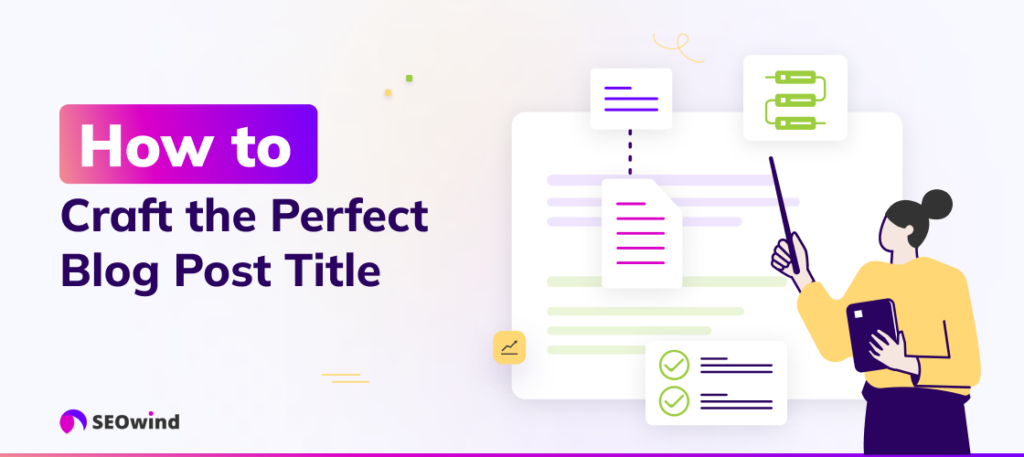
1. Follow Proven Headline Frameworks
Great headlines aren’t accidents. They follow proven patterns. Siege Media’s research identified a four-part formula that consistently beats standard headlines:
Keyword + Purpose + Value + Action = Winning Headline
For example: “Content Marketing Strategy: How to Create a Plan That Drives Results Now”
- Keyword (Content Marketing Strategy)
- Purpose (Create a Plan)
- Value (Drives Results)
- Action (Now)
Other effective frameworks include:
- The Curiosity Gap Formula: “The Surprising Reason [Common Belief] Is Actually Wrong”
- The Ultimate Resource Formula: “The Definitive Guide to [Topic]: Everything You Need to Know in 2024”
- The Problem-Solution Formula: “Struggling with [Problem]? Try These 5 [Solution] Techniques Today”
2. Use Data and Testing to Optimize Headlines
CoSchedule’s analysis of over 1 million headlines shows that data-driven headline optimization can improve engagement by up to 29%. Implement headline testing by:
- Creating 3-5 variations of each headline to test different approaches
- Using headline analyzer tools to score headline effectiveness
- Running A/B tests for email subject lines and social media posts
- Tracking CTR differences between headline variations in Google Search Console
Buffer’s case study shows how systematically testing headlines helped grow their blog from zero to 1.5 million monthly sessions.
3. Leverage the Psychology of Headlines
Outbrain’s content engagement study reveals specific triggers that drive engagement. The most effective headlines:
- Use negative superlatives (which beat positive ones by 30%)
- Include odd numbers (which generate 20% better response than even numbers)
- Incorporate emotional power words that trigger specific responses
- Ask questions that get people thinking
Power words categorized by emotion include:
- Trust words: Guaranteed, Proven, Scientific, Research-backed, Evidence
- Fear words: Mistake, Failure, Risk, Warning, Danger
- Curiosity words: Secret, Surprising, Unexpected, Hidden, Revealed
- Value words: Essential, Critical, Fundamental, Game-changing, Revolutionary
4. Structure Your Heading Hierarchy
Proper heading structure doesn’t just improve readability. It boosts content performance. Follow these guidelines:
- Use only one H1 tag containing your primary keyword
- Create logical H2 sections that divide content into major themes
- Use H3 tags for supporting subtopics that expand on H2 sections
- Keep consistent patterns throughout for better user understanding
A well-structured hierarchy guides readers and search engines through your content, improving both engagement and SEO performance.
5. Optimize Headlines with Strategic Keywords
When creating blog headings, it’s essential to integrate SEO without compromising reader appeal. Successful keyword integration:
- Places the primary keyword within the first 50 characters of the headline
- Incorporates long-tail keyword variations into subheadings
- Uses natural language that matches actual search queries
- Avoids keyword stuffing that hurts credibility and readability
6. Apply the “Before and After” Headline Transformation
Transform ordinary headlines into compelling ones by applying specific enhancement techniques:
Industry: B2B Marketing
- Before: “Email Marketing Tips”
- After: “7 Email Marketing Tactics That Increased Our Open Rates by 43%”
Industry: Personal Finance
- Before: “How to Start Investing”
- After: “How to Start Investing With Just $100: A Step-by-Step Guide for Beginners”
Industry: E-commerce
- Before: “Improve Product Descriptions”
- After: “How 5 E-commerce Brands Doubled Conversions by Rewriting Product Descriptions”
Industry: Healthcare
- Before: “Weight Loss Advice”
- After: “The Science-Backed Weight Loss Method Most Nutritionists Don’t Share”
Industry: Home Improvement
- Before: “DIY Kitchen Renovation”
- After: “DIY Kitchen Renovation: How We Saved $12,000 With These 8 Contractor-Approved Tricks”
Each transformation adds specificity, value, credibility, or emotional impact to increase click-through potential.
9. Optimize Headline Length for Readability and SEO
Research consistently shows that headline length significantly impacts performance:
- Search engines typically display the first 50-60 characters in results
- Headlines between 6-8 words achieve optimal engagement (Siege Media)
- Headlines with 70-100 characters maximize social sharing potential

The ideal headline strikes a balance between comprehensiveness and conciseness, providing enough information to generate interest without overwhelming readers.
Real-World Impact: Case Studies of Headline Optimization
Buffer: From Zero to 1.5 Million Monthly Sessions
Buffer systematically tested blog headlines for every post, experimenting with variations to maximize clicks and shares. Their headline testing approach involved:
- Creating 20+ headline variations for each post using their internal “Headline Brainstorm Template“
- Testing top 3-5 variants across social channels, mainly on Twitter,
- Selecting winners based on CTR, sharing rate, and engagement time
This methodical approach revealed that:
- Numbers and powerful adjectives consistently beat generic headlines
- Question-based headlines drove more engagement than statement headlines
- list and curiosity headlines work
Buffer’s growth from zero to 1.5 million monthly sessions over six years was correlated with its headline optimization discipline. However, it wasn’t the sole factor.
GrowthBadger: 843% Traffic Increase Through Headline Optimization
GrowthBadger achieved an 843% increase in traffic for a single post after optimizing its headline structure. By transforming a standard title like “Survey Results: Blogging Trends” into the more compelling “We Surveyed 1,000+ Bloggers: Here’s What Actually Gets Traffic (and What Doesn’t),” they dramatically improved engagement metrics.
The revised headline’s success factors included:
- Adding specific data points (“1,000+ bloggers”)
- Creating a curiosity gap (“what actually gets traffic”)
- Including a contrasting element (“and what doesn’t”)
- Using first-person language to enhance credibility
This strategic headline transformation significantly increased backlinks, shares, and organic traffic to the post, demonstrating how headline optimization alone can enhance content performance.
FAQ on Blog Headings
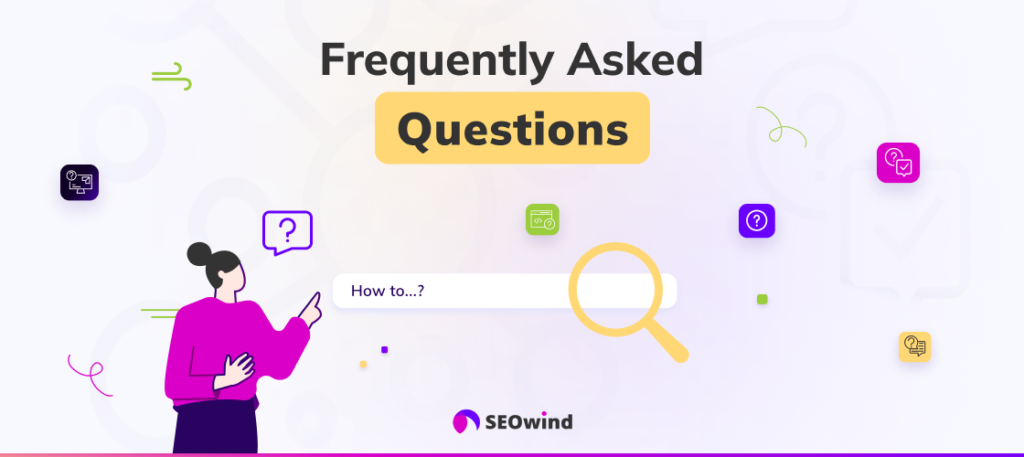
How do you write a blog heading that actually gets clicks?
Writing a blog heading requires putting yourself in the reader’s shoes to create an engaging, informative, aWriting click-worthy blog headings requires balancing several key elements:
- Address specific reader problems or desires
- Include numbers when presenting lists or statistics (increases CTR by 36% according to Backlinko research)
- Use emotional trigger words that create curiosity, urgency, or excitement
- Keep headlines between 6-8 words for optimal engagement
- Test multiple variations to see which performs best
The most effective headlines combine psychological triggers with clear value propositions, giving readers compelling reasons to click.
What makes a good blog headline, according to data?
Research from multiple sources shows that high-performing headlines share several characteristics:
- Specificity: Clear, concrete language that avoids vague promises
- Utility: Obvious value proposition that addresses reader needs
- Urgency: Time-sensitive elements that encourage immediate action
- Uniqueness: Distinctive angle that stands out from similar content
- Numbers: Statistical elements that signal structured, valuable information
According to CoSchedule’s analysis of over 1 million headlines, those containing odd numbers perform 20% better than headlines with even numbers.
How should I structure headings in a blog post?
Proper heading structure follows a clear hierarchy:
- H1: Use exactly one H1 tag for your main title containing your primary keyword
- H2: Major section headings that divide content into logical segments
- H3: Subheadings within H2 sections that address specific aspects of the topic
- H4-H6: Used sparingly for further subsections when necessary
This approach creates an information hierarchy that improves reader comprehension and search engine understanding of your content.
How many H2 tags or headings should I use in a blog post?
The optimal number of H2 headings depends on several factors:
- Article length (longer articles typically need more subheadings)
- Topic complexity (more complex topics benefit from additional segmentation)
- Reader comprehension needs (technical topics may need more breakdown)
A general guideline is to include an H2 heading every 300-350 words to keep readers engaged and provide clear content navigation. For a 1,500-word article, this translates to approximately 4-5 H2 headings.
When should I use the H1, H2, and H3 tags in a blog post?
Each heading level serves a specific structural purpose:
- H1: Reserved exclusively for the main article title/headline
- H2: Used for major topic divisions that could almost stand as separate articles
- H3: Used for specific points within H2 sections that deserve their own subheading

This hierarchical approach creates a logical information structure that improves both readability and SEO performance.
What is the perfect length for a blog title?
Research shows several optimal ranges depending on the platform:
- For SEO: 50-60 characters (to avoid getting cut off in search results)
- For engagement: 6-8 words (shown to maximize readability according to Siege Media)
- For social sharing: 70-100 characters (balancing detail with shareability)
The ideal title is concise enough to be quickly understood yet comprehensive enough to clearly convey value and content.
Do Questions Make Effective Blog Post Titles?
Questions work exceptionally well as blog post titles when they match how people actually search for information. According to SEOwind’s analysis of content performance, question headlines that mirror common search queries show higher engagement rates because they:
- Directly match how people search (often typing questions into search engines)
- Create an information gap that makes readers want to click for the answer
- Signal to readers that specific information needs will be addressed
The most effective question headlines focus on “how,” “why,” and “what” formats that promise clear, actionable answers rather than simple yes/no responses.
